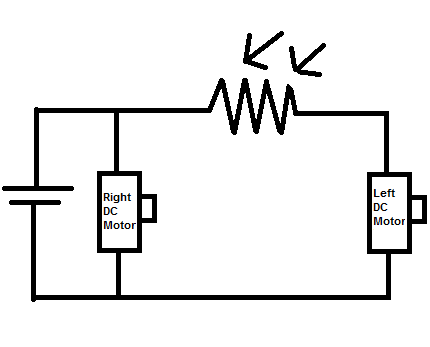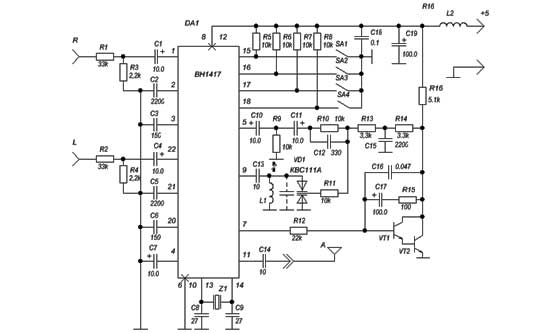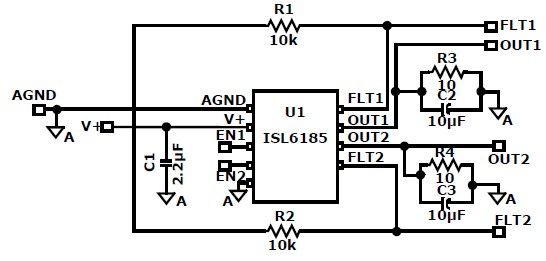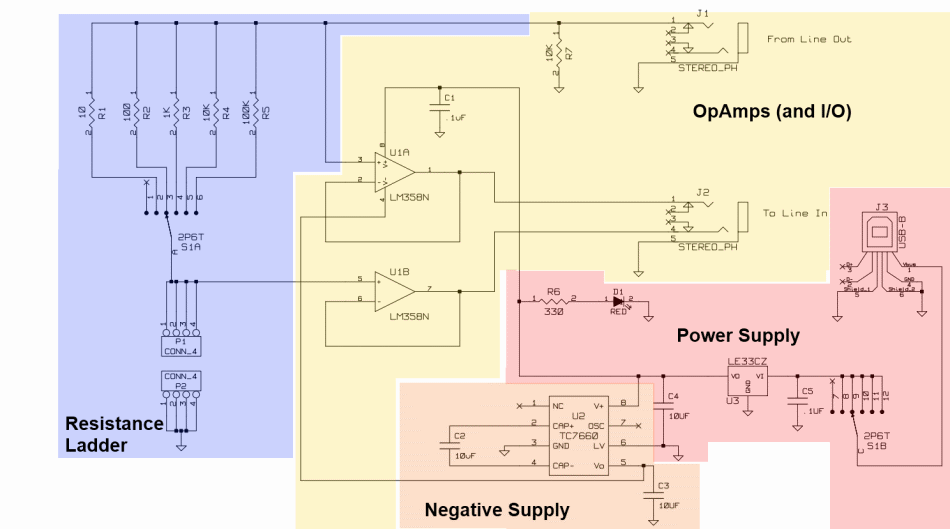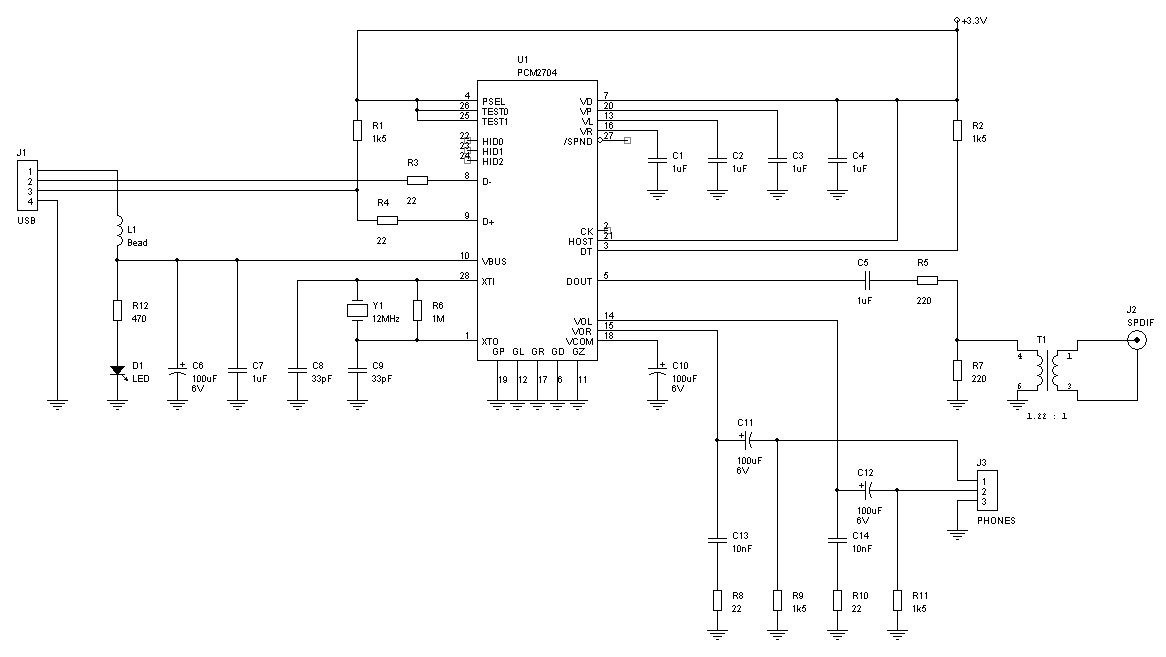
USB Host and Device
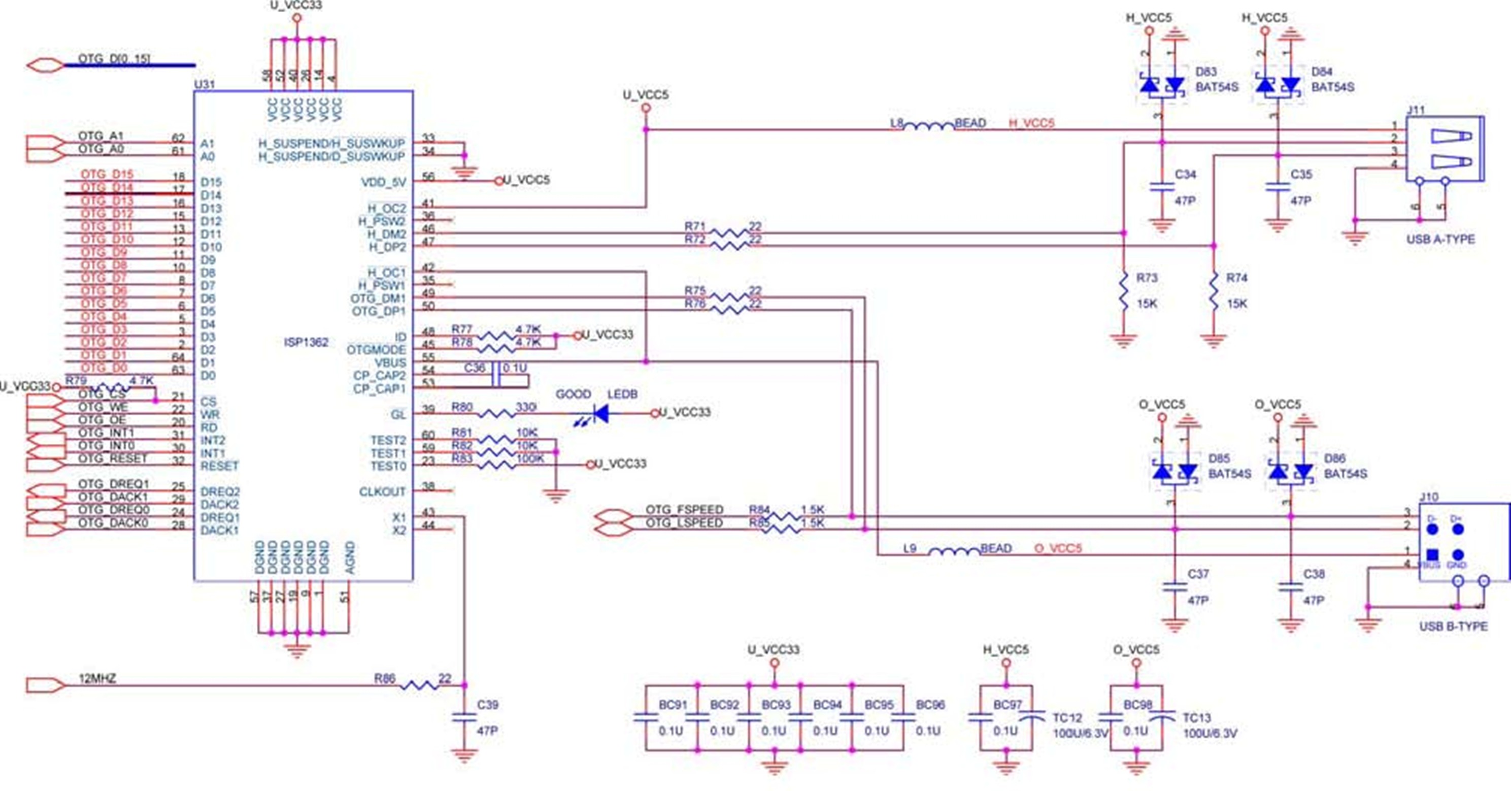
The DE2 board features both USB host and device interfaces utilizing the Philips ISP1362 single-chip USB controller. The host and device controllers adhere to the Universal Serial Bus Specification Revision 2.0, enabling data transfer at full-speed (12 Mbit/s) and low-speed (1.5 Mbit/s). The schematic diagram of the USB circuitry is illustrated in Figure 1. The pin assignments for the corresponding interface are detailed in Table 1. Comprehensive information regarding the use of the ISP1362 device can be found in its datasheet and programming guide, both of which are referenced below. The most complex aspect of a USB application lies in the design of the required software driver. Two complete examples of USB drivers for both host and device applications are presented in Sections 5.3 and 5.4. These demonstrations offer software driver examples for the Nios II processor.
The DE2 board's USB interfaces, governed by the Philips ISP1362 controller, allow for versatile connectivity options in embedded systems. The controller's compliance with USB 2.0 standards ensures compatibility with a wide range of devices, facilitating both high-speed and low-speed data transfers. The schematic diagram provides a visual representation of the USB circuitry, showcasing the configuration and connections essential for the operation of the USB host and device interfaces.
Pin assignments, as listed in Table 1, are critical for proper interfacing and functionality between the DE2 board and external USB devices. Each pin serves specific roles, such as power management, data transmission, and control signals, which are vital for seamless communication.
The ISP1362 datasheet and programming guide are indispensable resources for developers, offering in-depth technical specifications, operational guidelines, and programming methodologies. These documents are essential for understanding the nuances of the ISP1362 controller, enabling engineers to implement robust USB solutions.
The development of software drivers is a key challenge in USB applications. The provided examples in Sections 5.3 and 5.4 serve as practical references, demonstrating how to effectively write and implement drivers for both host and device configurations using the Nios II processor. These examples highlight best practices and common pitfalls, aiding developers in creating reliable USB applications.The DE2 board provides both USB host and device interfaces using the Philips ISP1362 single-chip USB controller. The host and device controllers are compliant with the Universal Serial Bus Specification Rev. 2. 0, supporting data transfer at full-speed (12 Mbit/s) and low-speed (1. 5 Mbit/s). Figure 1 shows the schematic diagram of the USB circuitry ; the pin assignments for the associated interface are listed in Table 1. Detailed information for using the ISP1362 device is available in its datasheet and programming guide; both documents can be found in the ISP1362 references below. The most challenging part of a USB application is in the design of the software driver needed. Two complete examples of USB drivers, for both host and device applications, can be found in Sections 5.
3 and 5. 4. These demonstrations provide examples of software drivers for the Nios II processor. 🔗 External reference
The DE2 board's USB interfaces, governed by the Philips ISP1362 controller, allow for versatile connectivity options in embedded systems. The controller's compliance with USB 2.0 standards ensures compatibility with a wide range of devices, facilitating both high-speed and low-speed data transfers. The schematic diagram provides a visual representation of the USB circuitry, showcasing the configuration and connections essential for the operation of the USB host and device interfaces.
Pin assignments, as listed in Table 1, are critical for proper interfacing and functionality between the DE2 board and external USB devices. Each pin serves specific roles, such as power management, data transmission, and control signals, which are vital for seamless communication.
The ISP1362 datasheet and programming guide are indispensable resources for developers, offering in-depth technical specifications, operational guidelines, and programming methodologies. These documents are essential for understanding the nuances of the ISP1362 controller, enabling engineers to implement robust USB solutions.
The development of software drivers is a key challenge in USB applications. The provided examples in Sections 5.3 and 5.4 serve as practical references, demonstrating how to effectively write and implement drivers for both host and device configurations using the Nios II processor. These examples highlight best practices and common pitfalls, aiding developers in creating reliable USB applications.The DE2 board provides both USB host and device interfaces using the Philips ISP1362 single-chip USB controller. The host and device controllers are compliant with the Universal Serial Bus Specification Rev. 2. 0, supporting data transfer at full-speed (12 Mbit/s) and low-speed (1. 5 Mbit/s). Figure 1 shows the schematic diagram of the USB circuitry ; the pin assignments for the associated interface are listed in Table 1. Detailed information for using the ISP1362 device is available in its datasheet and programming guide; both documents can be found in the ISP1362 references below. The most challenging part of a USB application is in the design of the software driver needed. Two complete examples of USB drivers, for both host and device applications, can be found in Sections 5.
3 and 5. 4. These demonstrations provide examples of software drivers for the Nios II processor. 🔗 External reference

